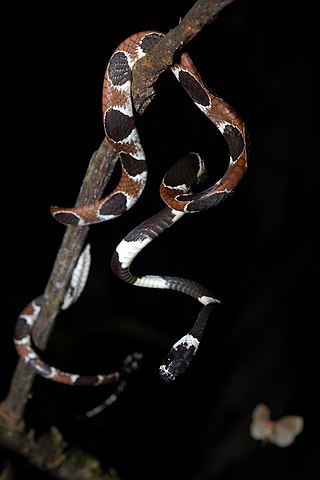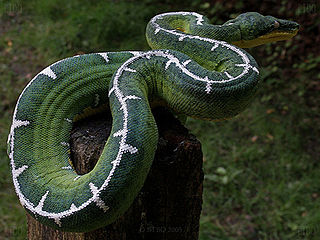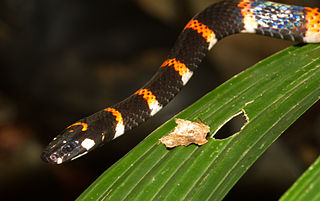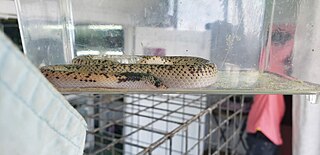
Dipsas indica, also known as the neotropical snail-eater, is a snake species found in South America. It feeds on slugs and snails, which the snake can extract from their shells using its slender jaw.

Dipsas is a genus of nonvenomous New World snakes in the subfamily Dipsadinae of the family Colubridae. The genus Sibynomorphus has been moved here. The genus Dipsas are as known as snail-eater.

The graceful snail-eater, is a non-venomous snake found in the northern part of South America . No subspecies are currently recognized.

Catesby's snail-eater, also commonly known as Catesby's snail sucker, is a nocturnal species of nonvenomous snake in the family Colubridae. The species is native to northern South America.

Dipsadinae is a large subfamily of colubroid snakes, sometimes referred to as a family (Dipsadidae). They are found in most of the Americas, including the West Indies, and are most diverse in South America. There are more than 700 species.

Antwerp Edgar Pratt FRGS was a Victorian naturalist, explorer, author, and renowned collector of plants, insects, and other animals. Species named for Pratt include three mammals and two reptiles. Two of his sons and a nephew were also collectors.

Corallus batesii, also known commonly as the Amazon Basin emerald tree boa, is a species of snake in the subfamily Boinae of the family Boidae. The species is native to the tropical rainforests of South America. This species was revalidated from the synonymy of Corallus caninus by Henderson and colleagues in 2009.

Rhinobothryum bovallii, commonly known as the coral mimic snake or the false tree coral, is a species of snake in the family Colubridae. The species is native to Central America and northwestern South America.

Pliocercus euryzonus, commonly known as Cope's false coral snake or the black halloween snake , is a species of snake in the subfamily Dipsadinae of the family Colubridae. The species is indigenous to southeastern Central America and northwestern South America. There are two recognized subspecies.
Alemán's snail-eater is a genus of snake in the family Colubridae.

Phimophis guianensis, also known commonly as Troschel's Pampas snake, is a species of snake in the subfamily Dipsadinae of the family Colubridae. The species is endemic to South America.
Atractus emigdioi, also known commonly as Emigdio's ground snake, is a species of snake in the family Colubridae. The species is endemic to Venezuela.
Atractus eriki is a species of snake in the family Colubridae. The species is endemic to Venezuela.
'''Dipsas copei is a non-venomous snake found in Guyana, Suriname, French Guiana, and Venezuela.
Dipsas latifrontalis, the broad-fronted snail-eater or Venezuela snail-eater, is a non-venomous snake found in Venezuela and Colombia.

Dipsas pavonina, the northern snail-eater, is a non-venomous snake found in Guyana, Suriname, French Guiana, Venezuela, Brazil, Colombia, Bolivia, Ecuador, and Peru.
Dipsas peruana, the Peruvian snail-eater or Peru snail-eater, is a non-venomous snake found in Peru, Venezuela, and Colombia, Ecuador, and Bolivia.

Dipsas sanctijoannis, the tropical snail-eater, is a non-venomous snake found in Colombia.
Dipsas temporalis, the temporal snail-eater, is a non-venomous snake found in Panama, Ecuador, and Colombia.











